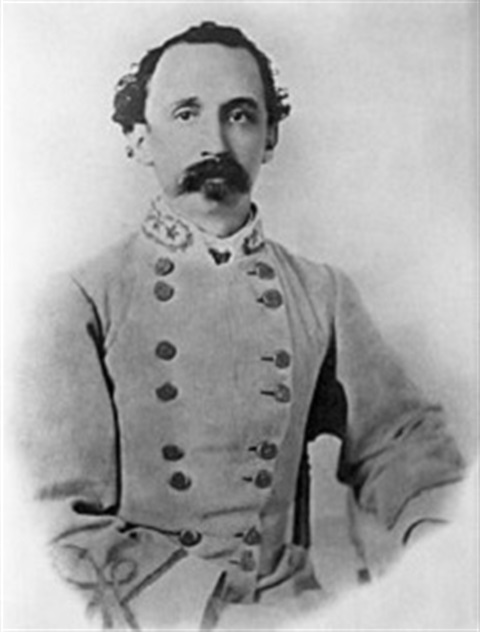Lawrence S. Ross

1838 - 1898
Lawrence Sullivan Ross was born September 27, 1838 at Bentonsport, Iowa Territory. In 1839 his family migrated to Texas, first settling in Milam County. By 1849 the family had settled at Waco. Sul Ross attended Baylor University at Independence, Texas and graduated from Wesleyan University, Florence, Alabama in 1859.
In the summer of 1858, Ross signed on with the U. S. Army as the leader of a band of Indian auxiliaries from the Brazos Indian Reservation. His skill and courage were noted by the regular army officers, but he nearly lost his life in October 1858 during a battle with Comanches at the Wichita Village near Rush Springs, Oklahoma. Recovering from his wounds, he returned to college and graduated the next spring.
Ross joined the Texas Rangers in 1860, first serving as a lieutenant and later as a captain. He was empowered by Sam Houston to raise a company of men to serve in Young County and the surrounding area. He showed the same skill and courage as a Ranger captain as he had shown earlier with the army. In December of 1860 he and his company pursued a Comanche raiding party that ended in the battle of Pease River in which Cynthia Ann Parker, who had been captured by the Comanche some 20 years earlier, was rescued. Ross resigned from the Rangers at the beginning of the Civil War.
Ross enlisted in the Confederate Army in 1861. He was soon promoted to the rank of major of the 6th Texas Calvary, and in May 1862 he was promoted to colonel. He was promoted to brigadier-general as a reward for his skill in covering the retreat of Gen. Earl Van Dorn from Corinth, Mississippi in 1863. He commanded a brigade in Wheeler's cavalry, Army of Tennessee, and later was in command of the Texas Calvary, Army of the West.
Returning to Texas after the war, he took up farming. He served as sheriff of McLennan County from 1873 - 1875, He was a member of the 1875 state constitutional convention, served as a state senator from 1881 - 1886 and as governor of Texas from 1887 - 1891. It was during his term in office that the new state capitol building was completed. Following his last term in office he was appointed president of the struggling Agricultural and Mechanical College of Texas (now Texas A & M University), an office he held until his death on January 3, 1898, in College Station.
Ross is one of the original Hall of Fame inductees from February 6, 1976.
Suggestions for further reading:
- Ross Family Papers, Texas Collection, Baylor University, Waco, Texas
- Homer L. Kerr, editor, Fighting with Ross' Texas Calvary Brigade, C. S. A., Hillsboro, TX: Hill Jr. College Press, 1976
- W. C. Nunn, editor, Ten More Texans in Gray, Hillsboro, TX: Hill Jr. College Press, 1980
- Amelia W. Williams and Eugene C. Barker, The writings of Sam Houston, Austin: Pemberton Press, 1970, vol. VIII
- The New Handbook of Texas, Austin: Texas State historical Commission, 1996, vol. 5
- Darren Ivey, The Ranger Ideal Volume 1: Texas Rangers in the Hall of Fame, 1823 – 1861, Denton: UNT Press, 2017
- Rossiter Johnson, editor, Twentieth Century Biographical Dictionary of Notable Americans, Boston: The Biographical Society, 1904, vol. IX